State Health Department Survey
ASSESSING THE INFRASTRUCTURE FOR PUBLIC STD PREVENTION SERVICES
Att 6_SHD survey screen shots
SHD Survey
OMB: 0920-1210
Attachment 6: State Health Department Instrument: Web Version
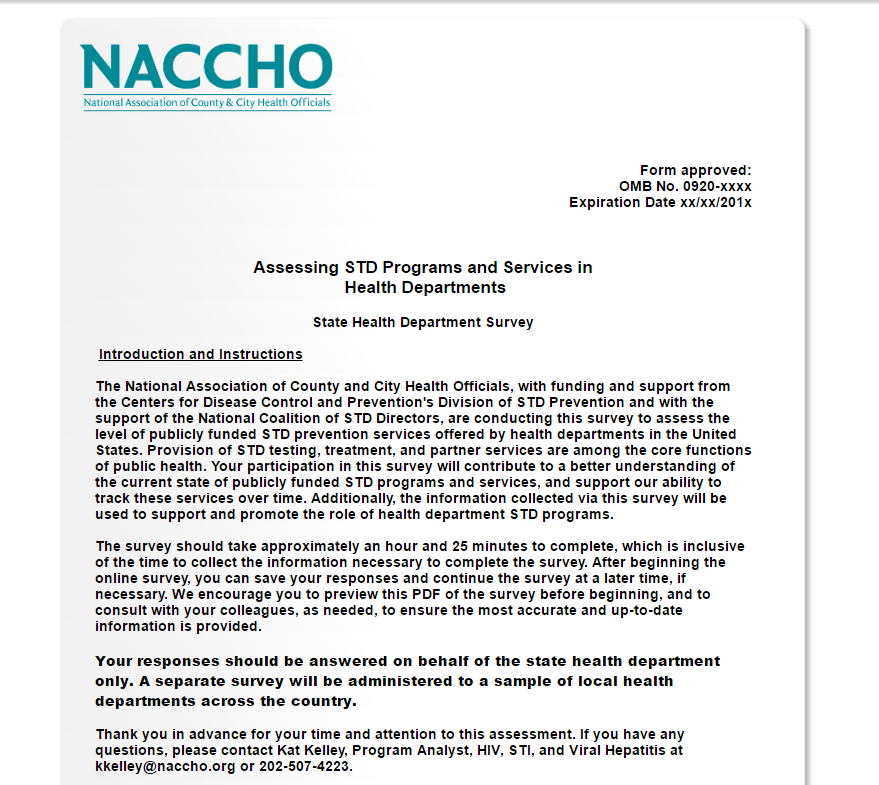
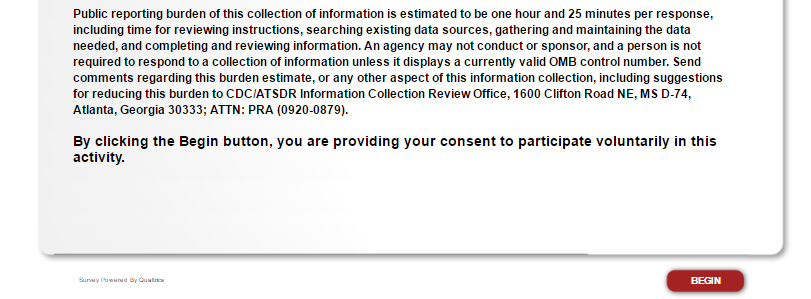
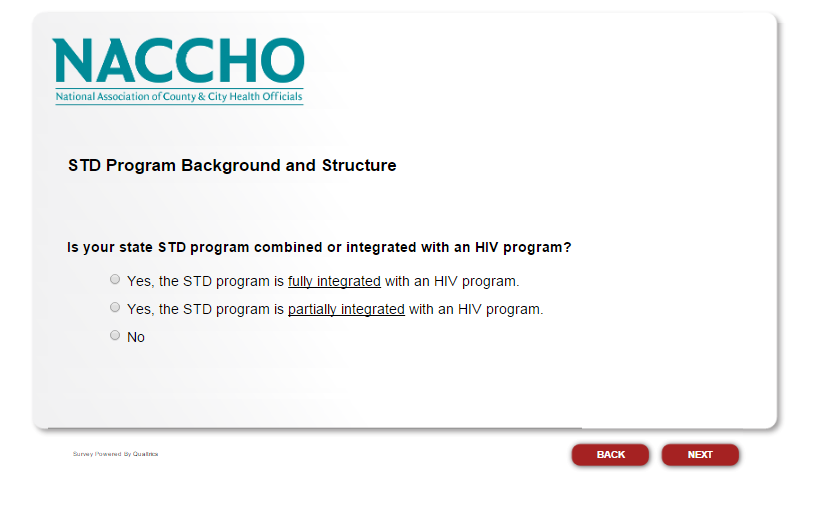
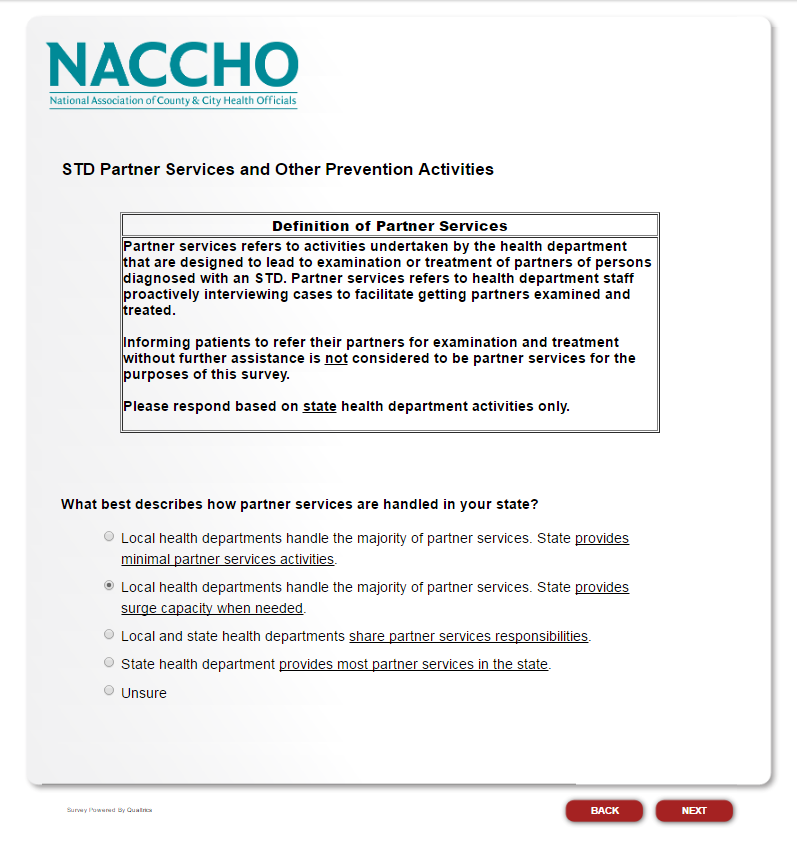
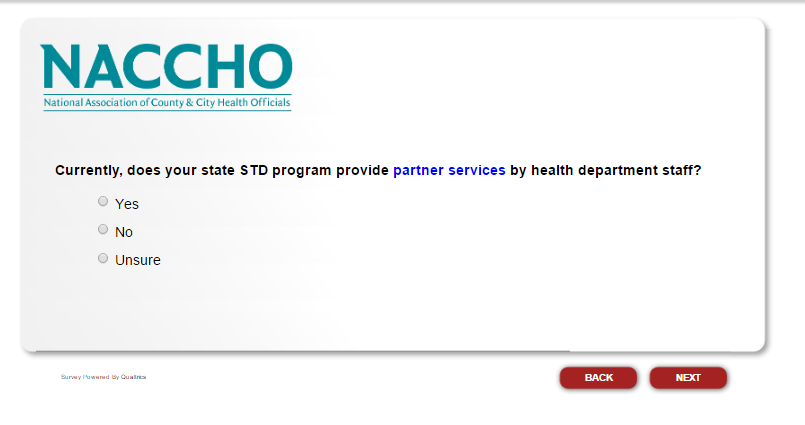
If the respondent selects “Yes,” proceed to the next question. If the respondent selects “No” or “Unsure,” skip to “What types of sexual health promotion activities does your state STD program currently provide or conduct? Select all that apply.”
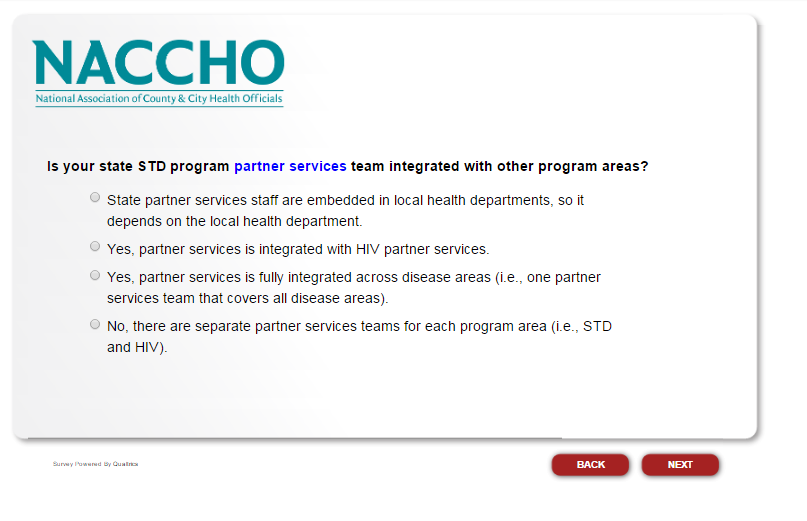
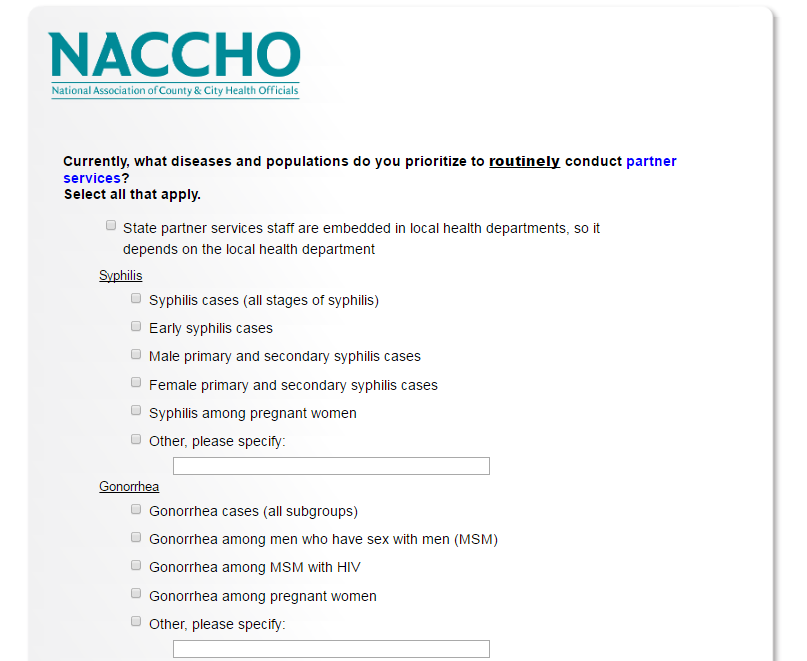
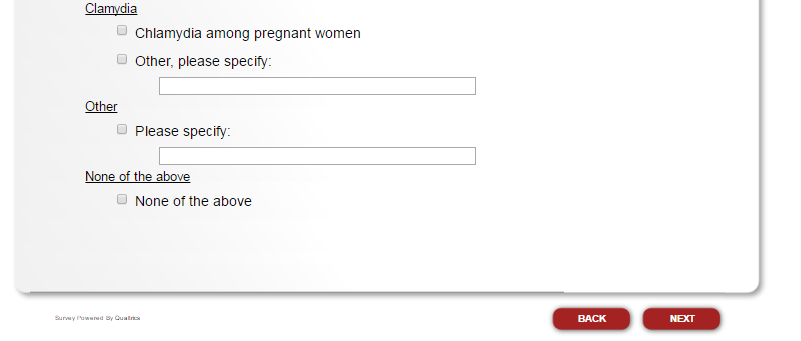
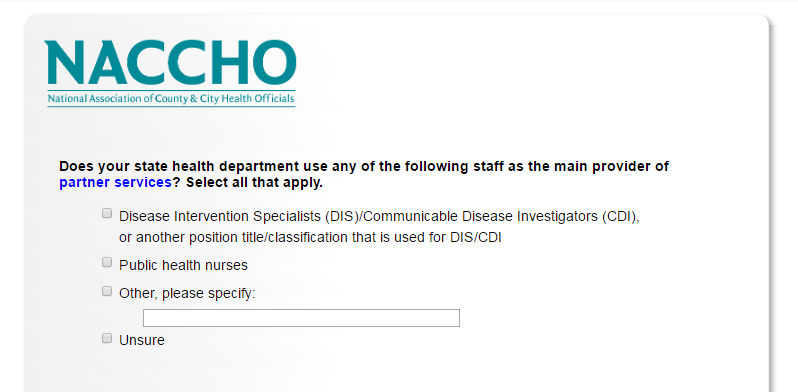
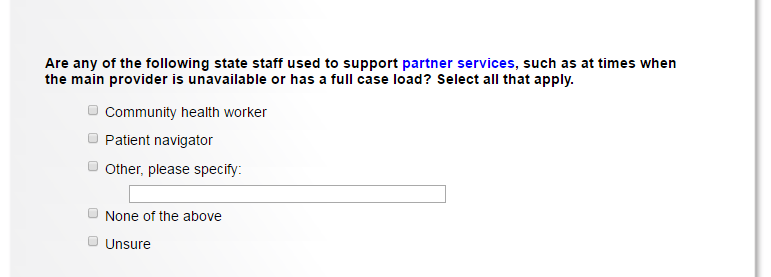
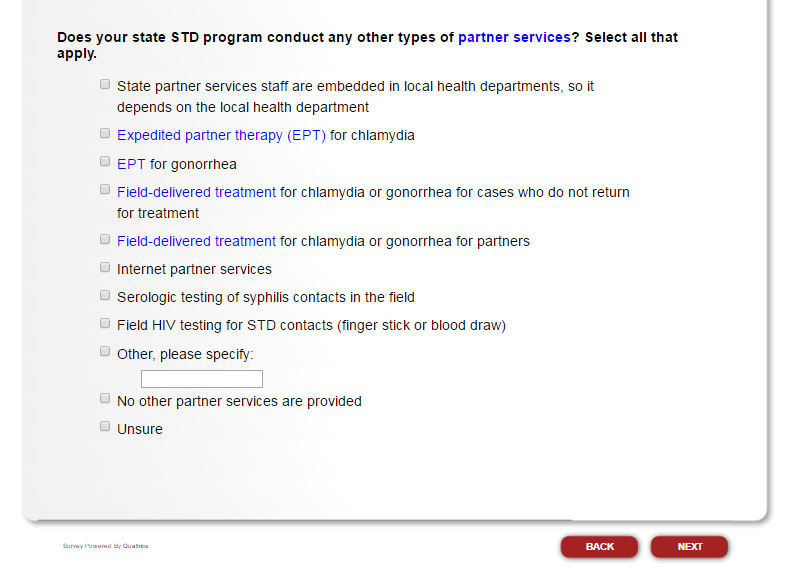
If respondent selects “Field HIV testing for STD contacts (finger stick or blood draw),” proceed to the next question. If respondent does not select this option, skip to “Do the staff in your STD program who are the main providers of partner services do any of the following activities? Select all that apply.”
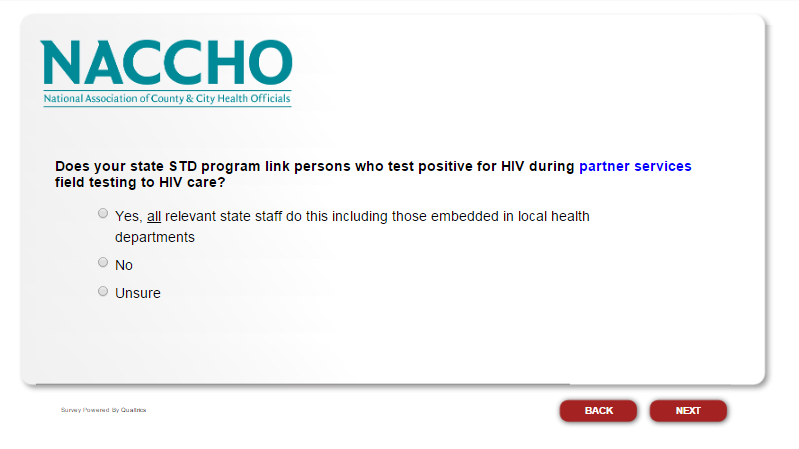
If respondent selects “Yes,” proceed to the next two questions. If respondent selects “No” or “Unsure,” skip to “Do the staff in your STD program who are the main providers of partner services do any of the following activities? Select all that apply.”
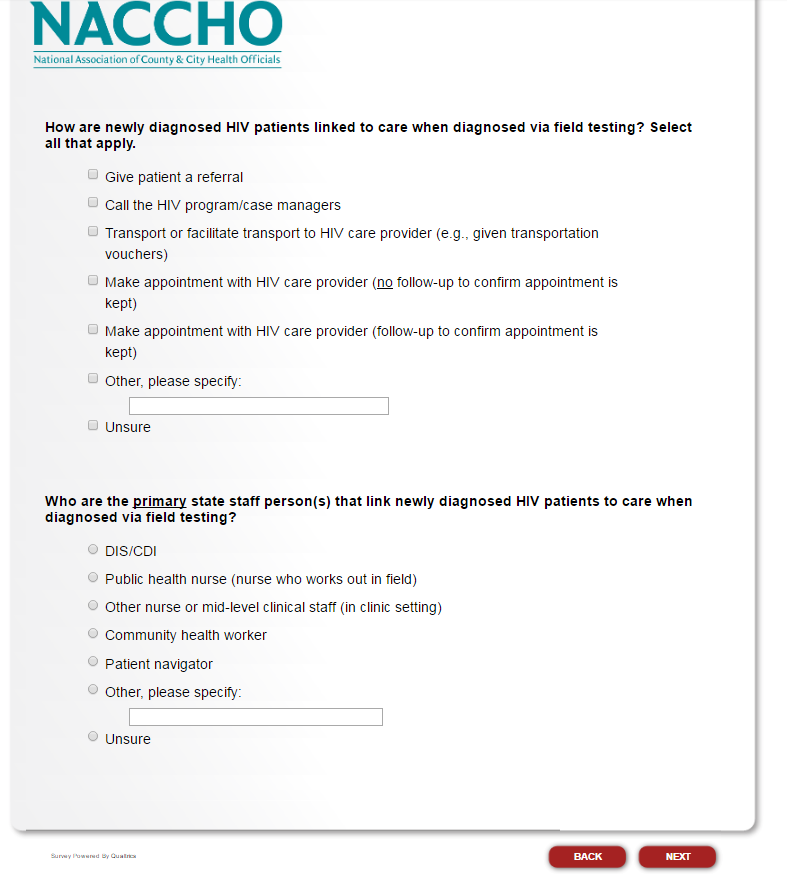

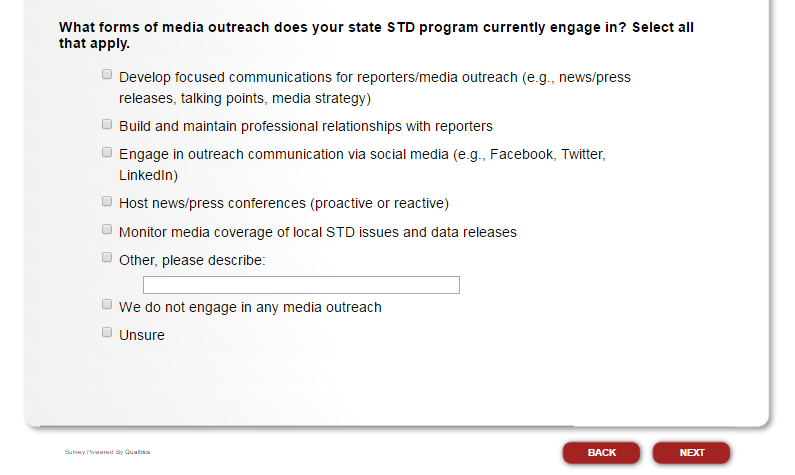
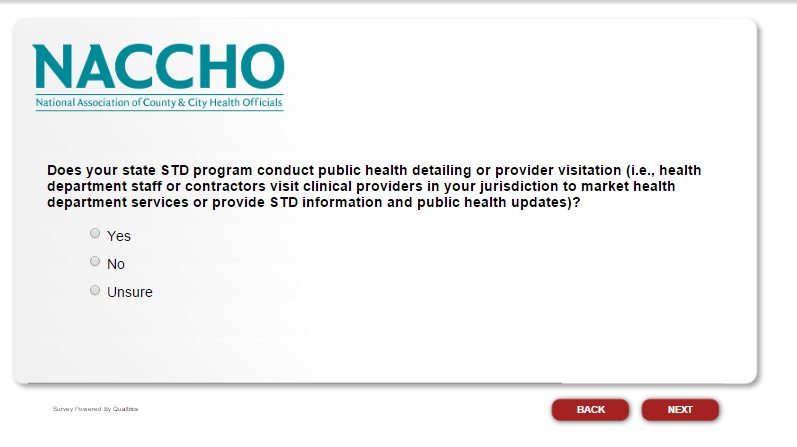
If respondent selects “Yes,” proceed to the next question. If respondent selects “No” or “Unsure,” skip to “What epidemiology and surveillance activities are currently conducted by your state program? Select all that apply.”
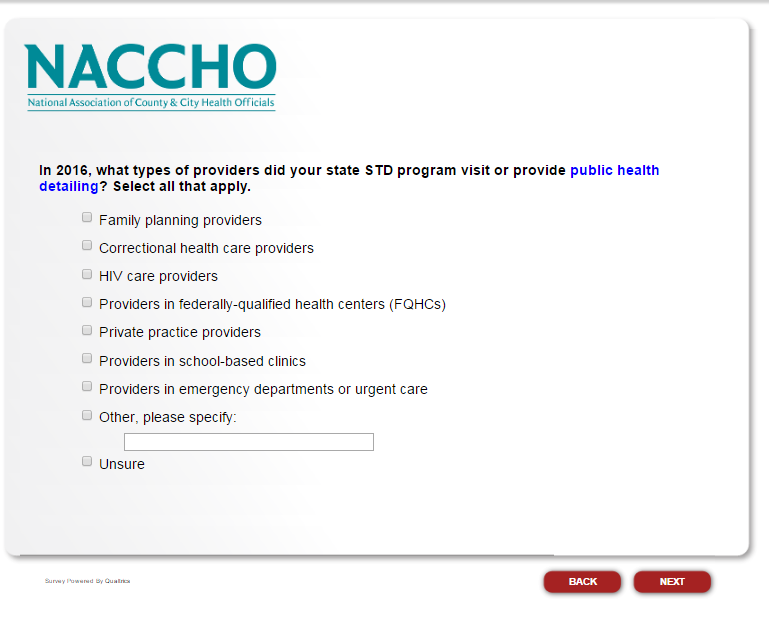
If respondent selects “Private practice provides,” please proceed to the next question. If respondent does not select this option, skip to “What epidemiology and surveillance activities are currently conducted by your state program? Select all that apply.”

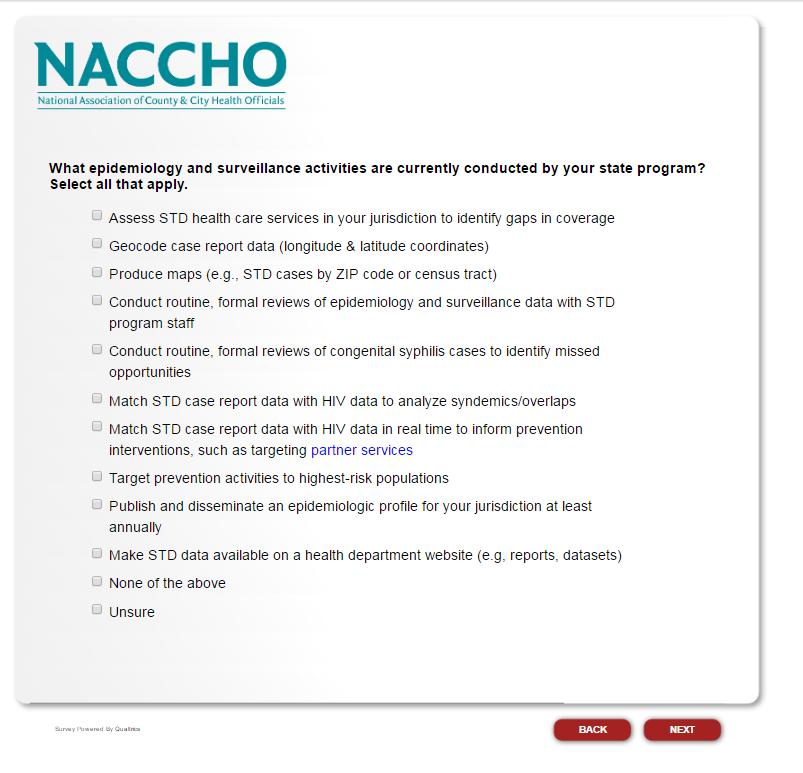
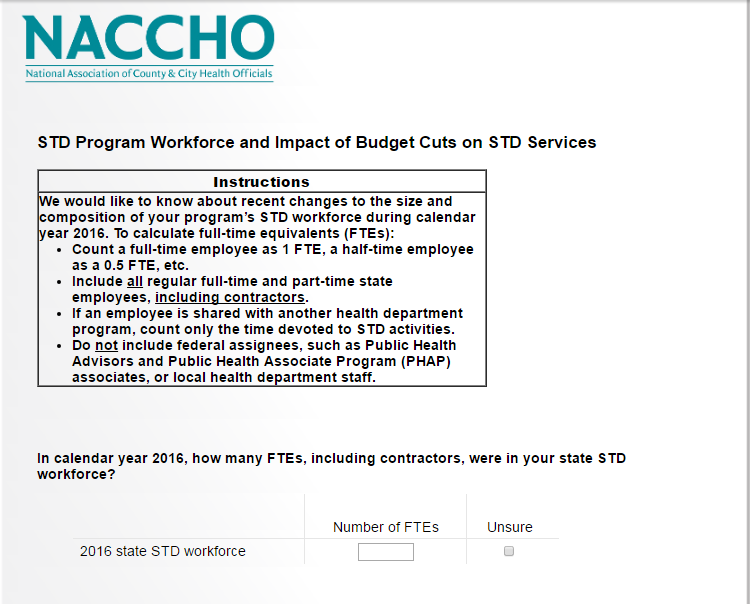
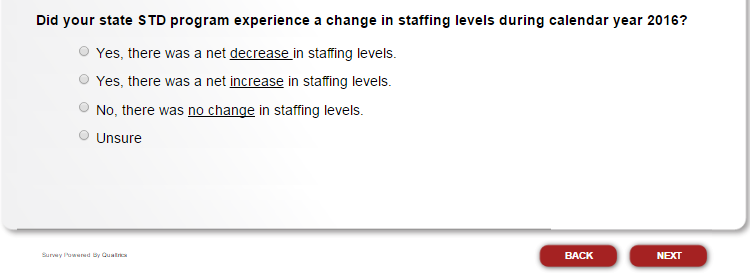
If respondent selects “Yes, there was a net decrease in staffing levels,” or “Yes, there was a net increase in staffing levels,” proceed to the next question. Respondents who select “Yes, there was a net decrease in staffing levels” will also answer “Please indicate any staffing categories in which FTEs, including contractors, decreased in calendar year 2016. Select all that apply,” while respondents who select “Yes, there was a net increase in staffing levels” will skip this question. If respondent selects “No, there was no change in staffing levels” or “Unsure,” skip to “What percentage of your state health department’s current STD workforce are DIS/CDI?”
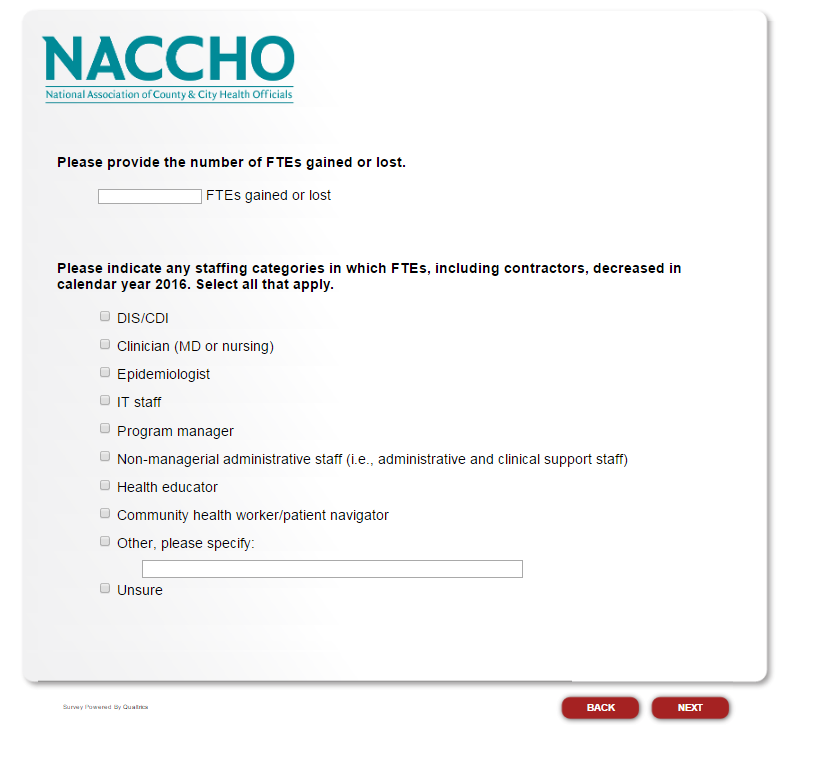
If respondent selects “DIS/CDI,” proceed to the next question. If respondent does not select this option, skip to “What percentage of your state health department’s current STD workforce are DIS/CDI?”

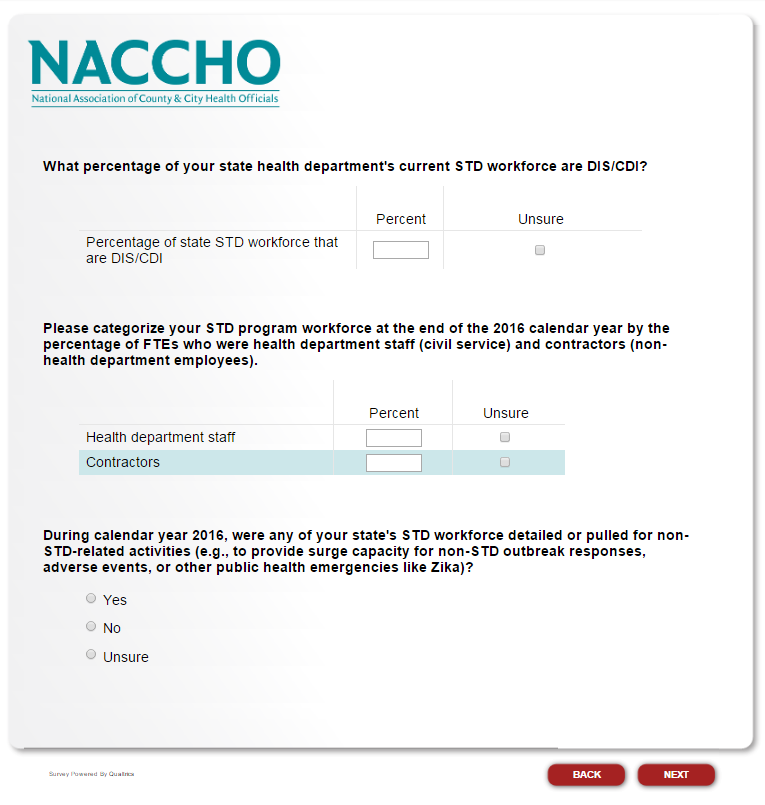
If respondent selects “Yes” for “During calendar year 2016, were any of your state’s STD workforce detailed or pulled for non-STD-related activities (e.g., to provide surge capacity for non-STD outbreak responses, adverse events, or other public health emergencies like Zika)?” proceed to the next question. If respondent selects “No” or “Unsure,” skip to “From January 2016 to the present, has your state STD program had any budget cuts?”
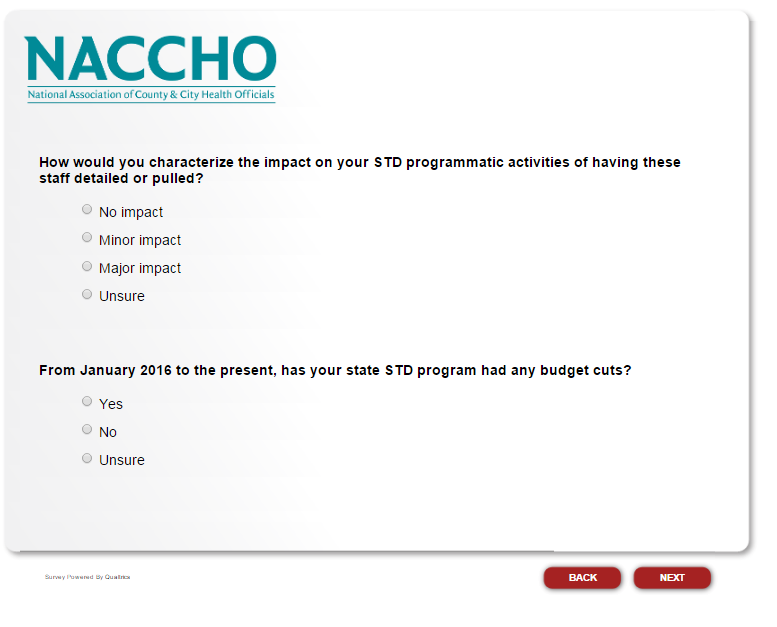
If respondent selects “Yes” to “From January 2016 to the present, has your state STD program had any budget cuts?” proceed to the next question. If respondent selects “No” or “Unsure,” proceed to “Please describe your state STD program’s greatest success in 2016. If possible, please include the impact of this success, such as impact on STD rates/cases or the impact on quality of STD services in your state.”

If respondent selects “STD program was eliminated,” skip to “Before submitting your responses, is there anything else you would like to share?” If respondent selects “Specialized STD clinic closures,” proceed to the next question. If respondent selects any option other than these two, skip to “How did you determine which programmatic activities to cut? Select all that apply.”
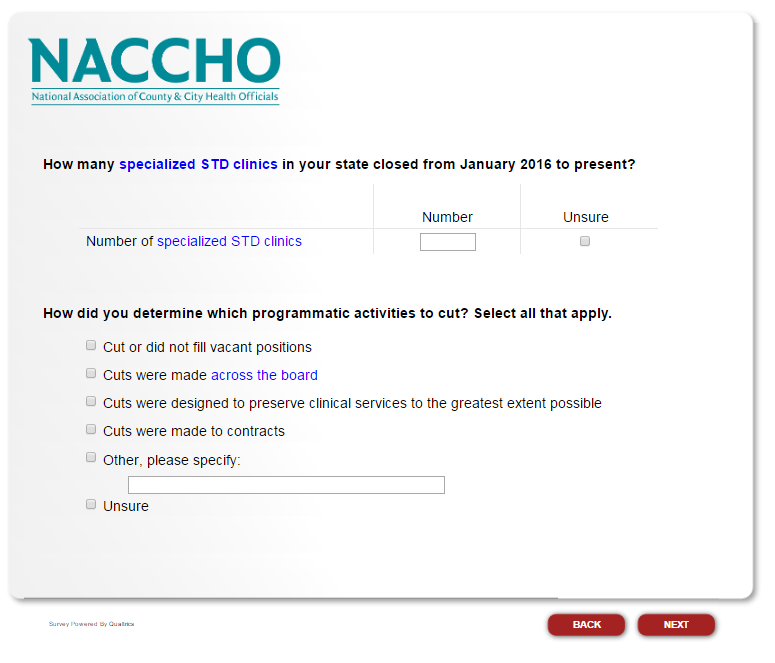
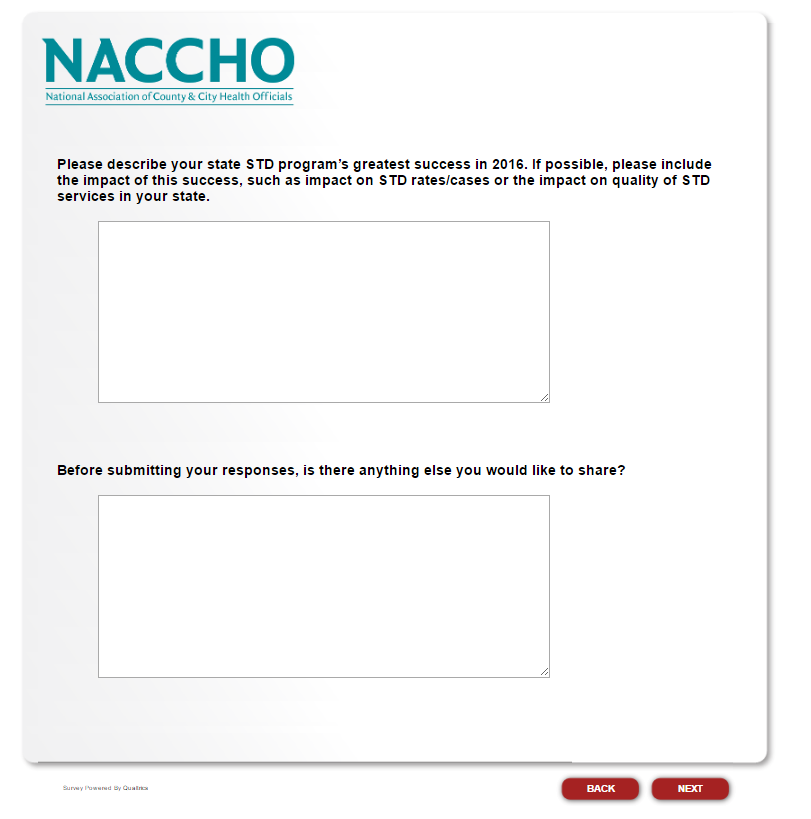
| File Type | application/vnd.openxmlformats-officedocument.wordprocessingml.document |
| Author | Samantha Ritter |
| File Modified | 0000-00-00 |
| File Created | 2021-01-22 |
© 2025 OMB.report | Privacy Policy